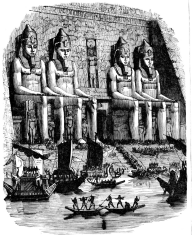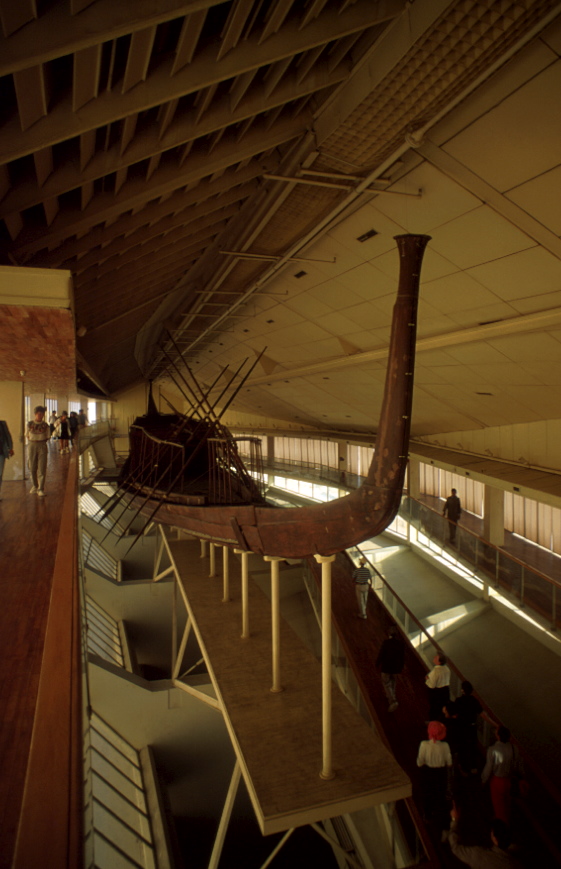

The smooth, cool waters of the Nile were as crowded as a highway. Huge cargo boats, heavy with grain and moving cattle floated past flimsy papyrus fishing boats. An army vessel sped by, going against the river’s current. Inside its hull sat rows of soldiers, rowing all together. Even the pharaoh traveled the river, floating leisurely on his splendid barge.
History of the Boat
Papyrus Boats
Wooden Boats
How Do We Know That?
The
ancient Egyptians used the Nile River for many things, including fishing,
transporting goods and travel. The
river was usually crowded with many boats traveling the whole length of Egypt.

History of the Boat
Egyptian boats were shallow and light so they could be lifted out of the water
and carried across the land. The first boats the early Egyptians built were made from
papyrus. In the Old Kingdom (around
2500 BC) boats were made of wood with steering gear and a double-footed mast.
As time went on, the boats became bigger and more complex.
In the biggest boats, skilled oarsmen were placed on each side of the
boat, and a lookout watched for sandbars.
Top of Page
Papyrus Boats
The earliest Egyptian boats were made of papyrus stalks tied together with rope.
These boats had a curved-shaped and were very light, making them easy to
carry over land. Fishermen used these small papyrus boats for their work.
As time went on, Egyptian shipbuilders began to build larger wooden
boats, which were modeled after the papyrus boats.
Top of Page
Wooden Boats
The Egyptians had several types of wooden boats, each serving a different
purpose. Some of the boats the
ancient Egyptians used were merchant ships, ferryboats, pleasure boats and
funerary boats. 
The merchant ships were used to transport grain, goods and herds of cattle. Larger items, such as obelisks were towed on narrow barges by cargo boats. Ferryboats transported ordinary Egyptians across the Nile River. Wealthy Egyptian pharaohs would take leisure trips on their pleasure boats.
Sacred boats or funerary boats were used to carry the
deceased to their final resting places. The
funeral boats could be over 100 feet long and weigh as much as 45 tons.
A mummiform coffin would be loaded onto one of these boats and taken to
the location of the tomb. When a
pharaoh was buried, ancient Egyptians believed he would need a boat in the
Afterlife, so they buried at least one near the tomb.
Top of Page
How Do We Know That?
In 1954, archaeologists discovered King Khufu’s boat, buried in pieces in a
pit next to the Great Pyramid at Giza. Five boat pits had been discovered, but only two contained
dismantled barges. One of these
boats was removed from the pit and put back together by the archaeologists.
Top of Page
Some images on this page are © 2000-2001 www.arttoday.com.